Showing Spotlights 1913 - 1920 of 2854 in category All (newest first):
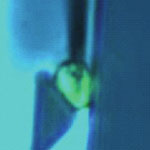 An intriguing novel approach to extract the energy from the photosynthetic conversion process has been demonstrated by researchers at Stanford and Yonsei Universities. They have inserted ultrasharp gold nanoelectrodes into living algae cells and extracted electrons, thereby harnessing an - albeit very tiny - electrical current. This is electricity production that doesn't release carbon into the atmosphere. The results demonstrate the feasibility of collecting high-energy electrons in steps of the photosynthetic electron transport chain and prior to the downstream processes associated with energy loss. In addition, the system allows direct monitoring of specific charge transfer reactions in live cells, leading to broad applications for investigating developmental processes and the responses of cells and organelles to light and chemical stimuli.
An intriguing novel approach to extract the energy from the photosynthetic conversion process has been demonstrated by researchers at Stanford and Yonsei Universities. They have inserted ultrasharp gold nanoelectrodes into living algae cells and extracted electrons, thereby harnessing an - albeit very tiny - electrical current. This is electricity production that doesn't release carbon into the atmosphere. The results demonstrate the feasibility of collecting high-energy electrons in steps of the photosynthetic electron transport chain and prior to the downstream processes associated with energy loss. In addition, the system allows direct monitoring of specific charge transfer reactions in live cells, leading to broad applications for investigating developmental processes and the responses of cells and organelles to light and chemical stimuli.
May 3rd, 2010
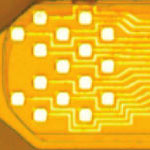 One of the most neglected aspects in the nanoelectronics field is the problem of wiring. How do we wire individual nanoelectronic devices within a nanointegrated circuit together? Furthermore, how do we extract and input information from such a circuit - i.e. how do we let it communicate with the outside world? Researchers at Caltech present a method for multiplexing the electrical signals from potentially tens of thousands of nanoscale sensors onto a single optical output, using piezoelectric nanoscale mechanical resonators. This work is a step closer to building miniscule, highly integrated sensor arrays that are untethered from the external environment.
One of the most neglected aspects in the nanoelectronics field is the problem of wiring. How do we wire individual nanoelectronic devices within a nanointegrated circuit together? Furthermore, how do we extract and input information from such a circuit - i.e. how do we let it communicate with the outside world? Researchers at Caltech present a method for multiplexing the electrical signals from potentially tens of thousands of nanoscale sensors onto a single optical output, using piezoelectric nanoscale mechanical resonators. This work is a step closer to building miniscule, highly integrated sensor arrays that are untethered from the external environment.
Apr 30th, 2010
 A European project has completed an extensive five-year study of the needs and opportunities for coordinating future research and development in nanomaterials science and nanotechnology for the advancement of technologies ranging from communication and information, health and medicine, future energy, environment and climate change to transport and cultural heritage. Based on the collaborative work of more than 600 experts from all over the world, the project has compiled an overall picture of the present and future developments in the large spectrum of nanomaterials. Although one of the foci was to highlight the important roles of advanced analytical equipment at European research infrastructures, especially at synchrotron radiation, laser and neutron facilities, the 500-page project report provides an excellent overview of the nanomaterials revolution that is upon us. This is one of the best, up-to-date primers on nanotechnologies!
A European project has completed an extensive five-year study of the needs and opportunities for coordinating future research and development in nanomaterials science and nanotechnology for the advancement of technologies ranging from communication and information, health and medicine, future energy, environment and climate change to transport and cultural heritage. Based on the collaborative work of more than 600 experts from all over the world, the project has compiled an overall picture of the present and future developments in the large spectrum of nanomaterials. Although one of the foci was to highlight the important roles of advanced analytical equipment at European research infrastructures, especially at synchrotron radiation, laser and neutron facilities, the 500-page project report provides an excellent overview of the nanomaterials revolution that is upon us. This is one of the best, up-to-date primers on nanotechnologies!
Apr 29th, 2010
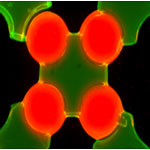 Hydrogels have been in development for several decades and are being used as parts in biology-based microdevices and medical diagnostic technologies, for drug delivery, and in tissue engineering. These gels are networks of water-insoluble polymer chains that are attractive for tissue engineering since their physical and biological properties can be tailored to mimic tissues. Researchers have found that the encapsulation of cells within cell-laden microgels is an attractive approach for engineered tissue formation. Scientists have now developed a technique for the self-assembly of cell-laden microgels on the interface of air and hydrophobic solutions to fabricate three-dimensional tissue constructs with controllable microscale features.
Hydrogels have been in development for several decades and are being used as parts in biology-based microdevices and medical diagnostic technologies, for drug delivery, and in tissue engineering. These gels are networks of water-insoluble polymer chains that are attractive for tissue engineering since their physical and biological properties can be tailored to mimic tissues. Researchers have found that the encapsulation of cells within cell-laden microgels is an attractive approach for engineered tissue formation. Scientists have now developed a technique for the self-assembly of cell-laden microgels on the interface of air and hydrophobic solutions to fabricate three-dimensional tissue constructs with controllable microscale features.
Apr 28th, 2010
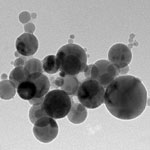 One of the key issues in the young field of nanotoxicology is the lack of standards and definitions. Although there have been some efforts, there still is no coherent international approach to determining if and what risks are posed by what kind of nanotechnology materials. At the core of the problem are the serious challenges that are created when comparing test results and drawing conclusions without adequate standardization and nanomaterial characterization. Exemplifying this set of problems further, a new study shows that even the most basic set of data, the nanomaterial characterization information provided by the manufacturer, can't be relied on - something which shouldn't come as a complete surprise given the existing problems with characterization data.
One of the key issues in the young field of nanotoxicology is the lack of standards and definitions. Although there have been some efforts, there still is no coherent international approach to determining if and what risks are posed by what kind of nanotechnology materials. At the core of the problem are the serious challenges that are created when comparing test results and drawing conclusions without adequate standardization and nanomaterial characterization. Exemplifying this set of problems further, a new study shows that even the most basic set of data, the nanomaterial characterization information provided by the manufacturer, can't be relied on - something which shouldn't come as a complete surprise given the existing problems with characterization data.
Apr 27th, 2010
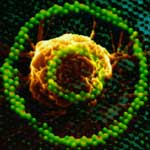 Even though traditional, digital computers have consistently increased in speed and complexity, they are limited by their reliance on sequential processing of instructions; i.e. no matter haw fast they are, they still process only one bit at a time. By contrast, individual neurons in our brain are very slow: they fire at only about 1000 times per second; however, since they are operating in a massively parallel way, with millions of neurons working collectively, they are able to complete certain tasks more efficiently than even the fastest super-computer. Another important distinction of our brain is that, during computing, information processing circuits evolve continuously to solve complex problems. An international research team from Japan and Michigan Technological University has now created a similar process of circuit evolution in an organic molecular layer, which also solves complex problems. This brain-like 'evolutionary' circuit has been realized for the first time in the world.
Even though traditional, digital computers have consistently increased in speed and complexity, they are limited by their reliance on sequential processing of instructions; i.e. no matter haw fast they are, they still process only one bit at a time. By contrast, individual neurons in our brain are very slow: they fire at only about 1000 times per second; however, since they are operating in a massively parallel way, with millions of neurons working collectively, they are able to complete certain tasks more efficiently than even the fastest super-computer. Another important distinction of our brain is that, during computing, information processing circuits evolve continuously to solve complex problems. An international research team from Japan and Michigan Technological University has now created a similar process of circuit evolution in an organic molecular layer, which also solves complex problems. This brain-like 'evolutionary' circuit has been realized for the first time in the world.
Apr 26th, 2010
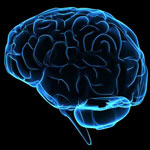 If you think that building an artificial human brain is science fiction, you are probably right - for now. But don't think for a moment that researchers are not working hard on laying the foundations for what is called neuromorphic engineering - a new interdisciplinary discipline that includes nanotechnologies and whose goal is to design artificial neural systems with physical architectures similar to biological nervous systems. One of the key components of any neuromorphic effort is the design of artificial synapses. The human brain contains vastly more synapses than neurons - by a factor of about 10,000 - and therefore it is necessary to develop a nanoscale, low power, synapse-like device if scientists want to scale neuromorphic circuits towards the human brain level. New research now suggests that memristor devices are capable to emulate the biological synapses with properly designed CMOS neuron components.
If you think that building an artificial human brain is science fiction, you are probably right - for now. But don't think for a moment that researchers are not working hard on laying the foundations for what is called neuromorphic engineering - a new interdisciplinary discipline that includes nanotechnologies and whose goal is to design artificial neural systems with physical architectures similar to biological nervous systems. One of the key components of any neuromorphic effort is the design of artificial synapses. The human brain contains vastly more synapses than neurons - by a factor of about 10,000 - and therefore it is necessary to develop a nanoscale, low power, synapse-like device if scientists want to scale neuromorphic circuits towards the human brain level. New research now suggests that memristor devices are capable to emulate the biological synapses with properly designed CMOS neuron components.
Apr 23rd, 2010
 There are great expectations for the future of nanomaterials science and worldwide attention has been drawn to the enormous potential of nanoscience and nanotechnology. Although Europe's expertise in nanomaterials science is excellent, it is highly fragmented into scientific disciplines, sectors and national efforts which are on a global level often subcritical. Europe would considerably benefit from a strategic pan-European, multidisciplinary research involving all sectors and the most advanced European research infrastructures. This is the great theme of GENNESYS, a foresight project to roadmap the future research needs and to pinpoint the various scientific challenges and technological limitations in the various areas in nanomaterials research.
There are great expectations for the future of nanomaterials science and worldwide attention has been drawn to the enormous potential of nanoscience and nanotechnology. Although Europe's expertise in nanomaterials science is excellent, it is highly fragmented into scientific disciplines, sectors and national efforts which are on a global level often subcritical. Europe would considerably benefit from a strategic pan-European, multidisciplinary research involving all sectors and the most advanced European research infrastructures. This is the great theme of GENNESYS, a foresight project to roadmap the future research needs and to pinpoint the various scientific challenges and technological limitations in the various areas in nanomaterials research.
Apr 22nd, 2010
 An intriguing novel approach to extract the energy from the photosynthetic conversion process has been demonstrated by researchers at Stanford and Yonsei Universities. They have inserted ultrasharp gold nanoelectrodes into living algae cells and extracted electrons, thereby harnessing an - albeit very tiny - electrical current. This is electricity production that doesn't release carbon into the atmosphere. The results demonstrate the feasibility of collecting high-energy electrons in steps of the photosynthetic electron transport chain and prior to the downstream processes associated with energy loss. In addition, the system allows direct monitoring of specific charge transfer reactions in live cells, leading to broad applications for investigating developmental processes and the responses of cells and organelles to light and chemical stimuli.
An intriguing novel approach to extract the energy from the photosynthetic conversion process has been demonstrated by researchers at Stanford and Yonsei Universities. They have inserted ultrasharp gold nanoelectrodes into living algae cells and extracted electrons, thereby harnessing an - albeit very tiny - electrical current. This is electricity production that doesn't release carbon into the atmosphere. The results demonstrate the feasibility of collecting high-energy electrons in steps of the photosynthetic electron transport chain and prior to the downstream processes associated with energy loss. In addition, the system allows direct monitoring of specific charge transfer reactions in live cells, leading to broad applications for investigating developmental processes and the responses of cells and organelles to light and chemical stimuli.
 Subscribe to our Nanotechnology Spotlight feed
Subscribe to our Nanotechnology Spotlight feed





